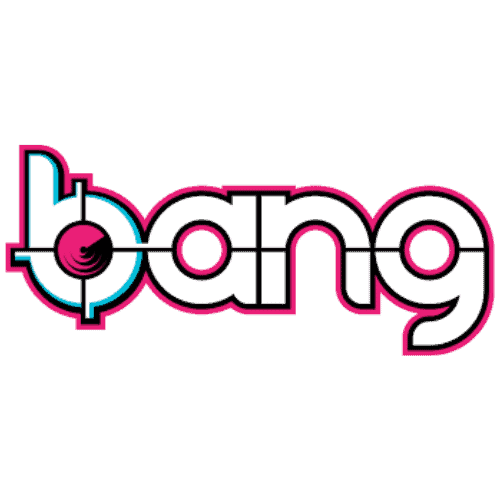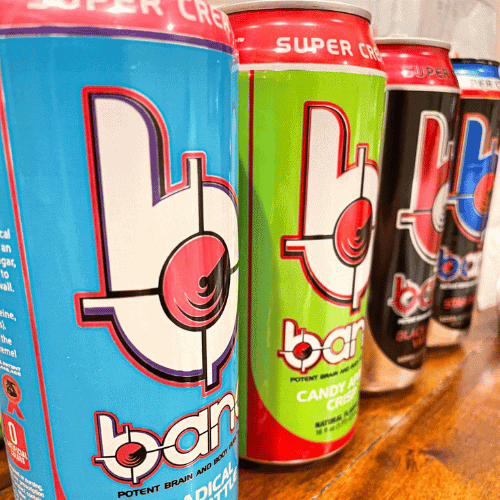Energy drinks give an extra boost in energy and increased alertness and attention. Certain brands have unique ingredients that make them more efficient, and for Bang Energy Drinks, it’s its proprietary Super Creatine. But a curious mind would wonder, how much creatine is in Bang Energy drinks? or how is it different from “regular” creatine?
This article will tackle facts about Bang Energy Drinks and break down the truth behind this ingredient and its supposed benefits.
Bang Energy Drink Creatine Content
A 2023 court order required Bang Energy and its founder, Jack Owoc, to cease using “Super Creatine” in marketing, take down related ads, and issue corrective statements.
What Are Bang Energy Drinks?

Bang Energy is a U.S. energy drink brand manufactured by Vital Pharmaceuticals (VPX), a corporation based in Florida (which also manufactures VPX Sports supplements). Along with Monster and Red Bull, it’s one of the most popular energy drinks nationwide.
Bang Energy has about 0 g of carbs, sugars, calories, and artificial colors, making it popular for those who aiming to lose weight and also for gym-goers seeking to maximize workouts with a rush of energy, with each can containing 300 mg of caffeine, making it one of the highest caffeinated energy drinks on the market.
The energy drink also contains Coenzyme Q10 (CoQ10), a substance that helps convert food into energy, and essential amino acids (EAAs), which boost exercise and athletic performance., prevent muscle loss, and promote protein synthesis.
Aside from caffeine, Bang Energy’s energy comes from its Super Creatine contentâ¦
What Is Super Creatine?

As we know, creatine is an amino acid in your body’s muscles and the brain. The body uses creatine for energy, which is why athletes, bodybuilders, and fitness enthusiasts take creatine to boost strength, increase muscle mass and improve athletic performance.
Bang Energy’s so-called Super Creatine is something else. The difference between Super Creatine and the regular kind is that it contains L-Leucine, an amino acid integral to building proteins in the body, supposedly making it more effective in improving clarity, focus, muscle synthesis, and muscle recovery after workouts.
But how much of this “creatine” is in a can of Bang Energy?
The Truth Behind Super Creatine
Bang Energy’s manufacturer, Vital Pharmaceuticals has received lawsuits in the past over the integrity of their energy drink ingredients.
In 2018, ThermoLife International, LLC another leading sports nutrition and supplements manufacturer, sued Vital Pharmaceuticals, claiming that the company was not transparent regarding Super Creatine and falsely advertised its supposed benefits, that the proprietary ingredient does not break down into creatine when digested, nor is it even a bioavailable form of creatine.
That same year, Monster Beverage Co.(Monster Energy Drink’s parent company) also filed a lawsuit because Vital Performance had misled consumers about the benefits of the supplement.
Eventually, a jury found both Vital Pharmaceuticals and its CEO John Owoc liable for false advertising and awarded Monster Energy Co. more than $271 million in damages. The ruling also required Bang to issue corrective statements and drop the “Super Creatine” label completely in its marketing within 60 days.
To sum it up, Bang Energy doesn’t have an ounce of creatine, contrary to what it advertises.
Is Bang Energy Drink Still Recommendable?
Setting aside the Super Creatine fiasco, Bang Energy is still a fairly recommendable energy drink given its nutritional content. Being sugar-free, it won’t give you sudden energy crashes.
| Sodium Content | Total Calories | Total Carbohydrates | Total Sugar | Total Fat |
| 40mg | 0g | 0g | 0g | 0g |
However, its high caffeine content might not suit well for everyone, as not everyone can tolerate such levels, and may only be well for those who have greater tolerance or those looking for a stronger kick in their energy drinks. Thankfully, it has certain flavors that are made without caffeine.
You’re sure to enjoy Bang Energy’s variety of flavor options, which offer more compared to other energy drink brands.
- Bangster Berry
- Blue Razz
- Champagne
- Citrus Twist
- Frose Rose
- Lemon Drop
- Peach Mango
- Pina Colada
- Power Punch
- Purple Haze
- Rainbow Unicorn
- Root Beer
- Star Blast
- Black Cherry Vanilla (caffeine-free)
- Cherry Blade Lemonade (caffeine-free)
- Cotton Candy (caffeine-free)
- Purple Guava Pear (caffeine-free)
- Sour Heads (caffeine-free)
What Does Creatine Do For The Body?
Creatine supplements provide a continuous energy supply by keeping production up in working muscles, with 95% stored in the skeletal muscle and used during physical activities. For example, it allows athletes to do more sprints or reps during their workouts, resulting in greater gains in strength, muscle mass, and performance.
Benefits Of Taking Creatine
Taking creatine is effective at augmenting training workouts and increasing muscular strength and lean body mass, as various studies have revealed, especially when combined with various training exercises.
Aside from increasing strength and muscle mass, it also helps:
- Slow down skin aging – One study found that creatine (via dermal penetration, among other ingredients) to the face daily for six weeks can reduce sagging and wrinkles among male subjects.
- Reduce oxidative stress – Creatine effectively protects the mitochondrial DNA from oxidative damage. Some experts also consider creatine as a direct-acting antioxidant that can scavenge ROS superoxide radicals.
- Maintain bone health – Studies show that creatine supplementation might help reduce age-related skeletal muscle, prevent the decline of bone mineral density, and ease the effects of osteoarthritis and other bone-related diseases.
- Protect and benefit the liver – Creatine supplementation can reduce fat buildup in the liver and prevent the risk of conditions like fatty liver, non-alcoholic liver disease, and hepatic damage.
- Improve brain function – Creatine, according to various studies, can improve performance during cognitive tasks like critical thinking, focus, and memorization, especially among older adults who suffer from age-related reduced brain functionality and neurological diseases.
Negative Effects Of Taking Creatine
While creatine is a dietary supplement that is generally safe; however, excessive intake may cause the following side effects:
- Weight gain
- Muscle cramps, strains, and pulls
- Stomach problems
- Diarrhea.
- Nausea/dizziness
- Increased risk of high blood pressure
- Liver problems
Frequently Asked Questions (FAQs)
What is creatine?
Creatine is a type of amino acid found naturally in muscle cells. It helps provide energy to the muscles during intense physical activities or exercises and promotes muscle growth and recovery.
Can I take creatine on an empty stomach?
Taking creatine on an empty stomach may cause side effects such as discomfort and nausea. To avoid this, take creatine with at least a small amount of food, as it’s best absorbed with a small number of carbohydrates and protein, whose energies can also produce better fuel during workouts.Â
Can energy drinks cause palpitations?
Drinking too many energy drinks has long been shown to cause an elevation in your heart rate and even trigger arrhythmias. To avoid this, stick to drinking just one can/bottle and set a limit on how much of it you can take.
Can energy drinks make me gain weight?
Energy drinks are often high in sugar, fats, and sodium, which are likely to lead to weight gain if consumed frequently in the long term
Can I take creatine and caffeine together?
Yes, creatine and caffeine are safe to be taken together to help improve physical performance in sports and workout routines. Â
Is creatine safe for kids and teens?
Kids already get creatine from meat, fish, eggs, milk, and certain vegetables. But when it comes to creatine supplements, experts say they shouldn’t take them until they’re 18 and above. The American Academy of Pediatrics, in particular specifically discourages its use by adolescents.
Is creatine safe for pregnant and breastfeeding women?
Many studies show that taking creatine supplements during pregnancy and breastfeeding is safe and even beneficial for both mother and her unborn child. However, it’s best to consult with a healthcare provider, nutritionist, or obstetrician before giving any supplement a try during these periods.
Recap
- Bang Energy Drinks is a popular energy drink knowns for delivering high, clean, crash-free energy. It’s third in popularity after other energy drinks like Monster and Red Bull
- Contrary to its proprietary ingredient Super Creatine, Bang Energy Drinks has zero (0) creatine.
Conclusion
Energy drinks are designed to increase energy levels and support optimal physical performance. However, some brands are not so transparent with the quality, integrity, and legitimacy of their ingredients, as we have seen with Bang Energy Drinks, whose Super Creatine, turned out to not have a single gram of creatine.
If you’re opting for an energy drink, it’s always important to do research about a certain brand and check if it meets quality standards and if the product suits your health needs and condition, that way you can make the most out of taking them and enjoy optimal results.
Related Articles
Does Creatine Contain Caffeine?








